"Adenium obese" ("Obesum"): description and care at home
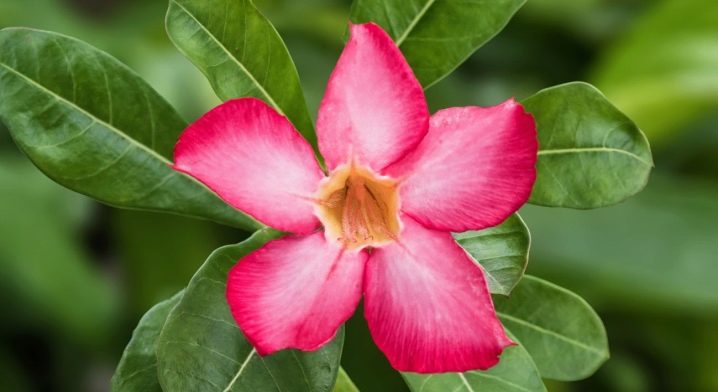
In the hot deserts of Africa and the Arabian Peninsula, an amazing plant grows with large pink-red flowers. Locals call it "Rose of the Desert", the scientific name is Adenium obesum or "Adenium thick (fat)". Recently, indoor species of this plant are gaining popularity among amateur flower growers.

Peculiarities
The tree-like succulent of the Kutrovy family is considered one of the most beautiful flowering plants of the desert. Small trees about 2-3 m high are distinguished by an interesting trunk shape: thickened near the root and tapering in the form of a bottleneck at the top, which is why they are called the bottle tree. The stem diameter can be up to 1 m. A significant part of the caudex is in the ground, and the crown is crowned with a bouquet of shoots with flowers and leaves. There are also giants among the adeniums, reaching 10 m in height.

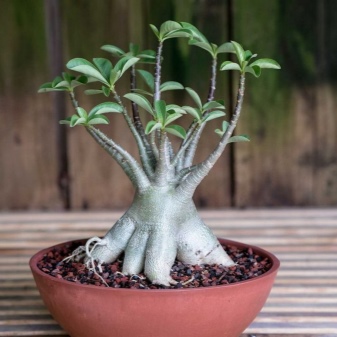
Dense glossy lanceolate leaves, arranged in a spiral, are rounded or slightly elongated upward. The length of the sheet plate varies from 60 to 200 mm. Funnel-shaped flowers up to 70 mm in diameter have a light core and 5 brightly colored petals ranging from white to crimson. In the wild, the petal shape is simple, but in indoor floriculture, species with double or semi-double buds are common, which can reach a diameter of 120 mm. For its beauty, the plant has several poetic names among the people:
- Desert Rose;
- Impala Lily;
- "Star of Sabinia".
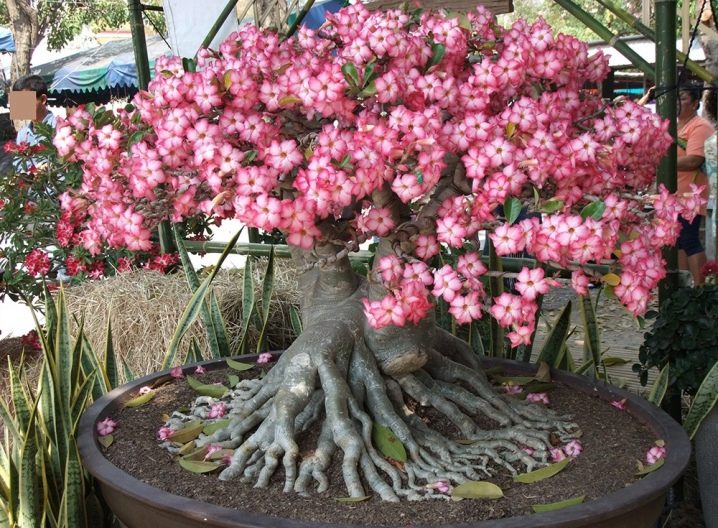
Succulent is very poisonous. The indigenous people of Africa used the juice of "Adenium" during hunting or war, rubbing poison on arrowheads and spearheads. For the first time, biologists compiled a description of "Obesum" in the 18th century, at the same time the classification of species was determined. To date, 10 plant species have been identified, differing in size and shape of the stem, leaves, flowers.
But some scientists believe that there is only "Adenium obese", and the differences are due to the area of growth of the succulent.
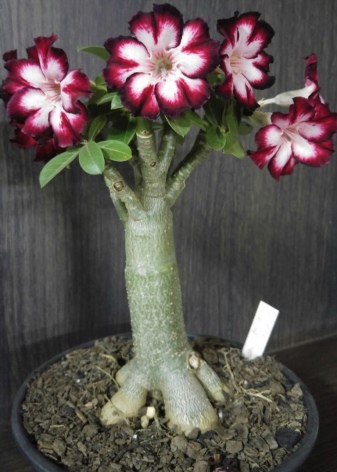
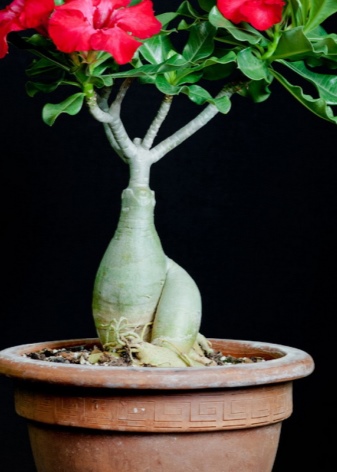
Obesum is the most widespread among flower growers. Because of the caudex, the flower resembles a bonsai, but is less demanding than a mini-tree. The height of a houseplant rarely exceeds 0.7 m, and the trunk, due to the formation, can take on an amazing appearance. The flower is responsive to leaving and reacts calmly to actions with its stem. Growers, forming a plant, can splic several trunks together, braid the shoots in braids, or cut them to create fantastic designs.

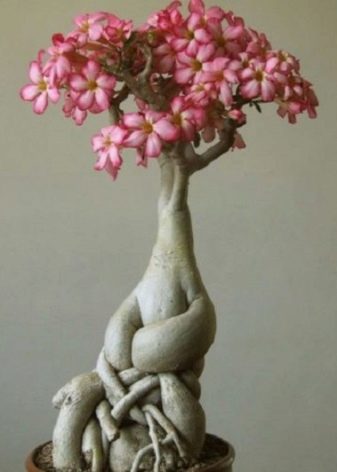
Difference from "Arabikum"
The second most popular among amateurs is "Adenium Arabicum". Despite the great similarity of species, between "Obesum" and "Arabicum" there is a difference in appearance and in places of distribution. "Adenium obese" grows in deserts from Senegal to Saudi Arabia. A fleshy grayish-brown bottle-shaped trunk is crowned with numerous shoots, which in the spring-summer period are covered with flowers and leathery gray-green leaves. The plant is considered evergreen, but it has dormant periods when the plant stops growing and stops flowering.
With a significant drop in temperature and in the event of severe drought, the succulent can completely shed its leaves. "Obesum" blooms at the age of one and a half years.
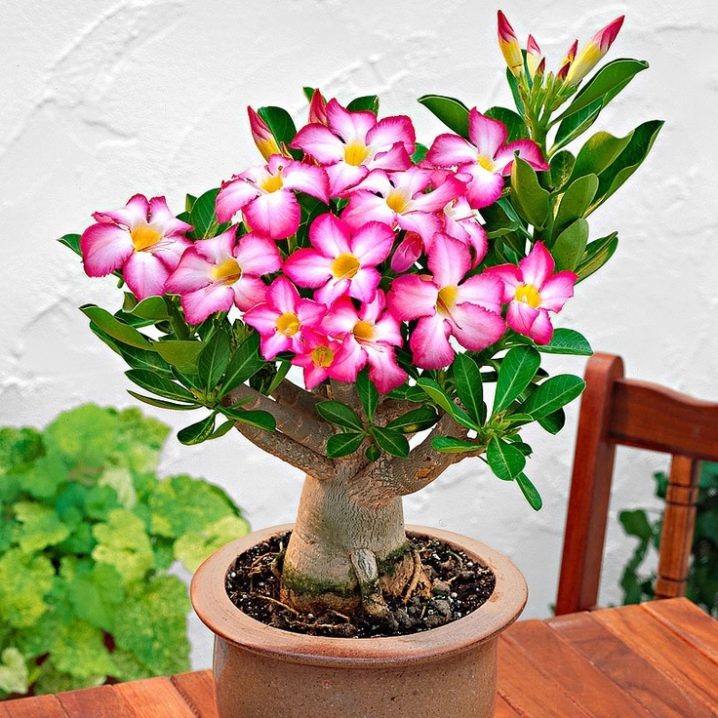
"Adenium Arabicum" also grows in the Arabian Peninsula, meeting in the deserts of Yemen and western Saudi Arabia.The plant has a low, thick caudex, pinkish with a purple tint or dark brown, clearly visible already at an early age. Saudi Arabicum preserves foliage all year round. Yemeni "Arabicum" has a pronounced dormant period when the plant completely sheds its leaves. The first time a succulent blooms in 3-4 years.

Conditions of detention
"Adenium obese" is an unpretentious plant that easily responds to compliance with the conditions of detention. It is better to take a succulent pot with a light, wide, round shape with a lot of drainage holes. A light pot will protect the soil from overheating and rotting of the root system. The diameter of the pot should be 2-3 times its depth. As part of the best substrate for "Obesum":
- coconut fibers, taking up half the volume;
- 3 pieces of leafy land;
- 1 part perlite;
- 1 part of expanded clay mixed with charcoal.
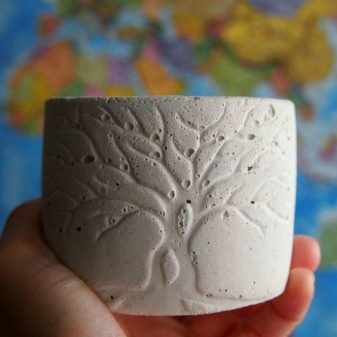
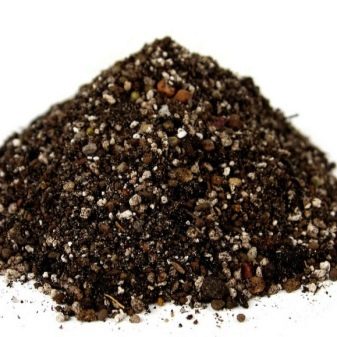
Loose neutral or slightly acidic soil must contain the necessary amount of fertilizers for the successful development of "Adenium". For the development of the "Rose of the Desert" needs bright sunlight, so "Obesum" is placed on the windowsills of the southern windows or on a balcony protected from drafts. The air temperature must be above 25 ° C.
The plant should stand in places inaccessible to children and animals, since the poisonous sap secreted by the plant can penetrate the skin, causing poisoning and burns.
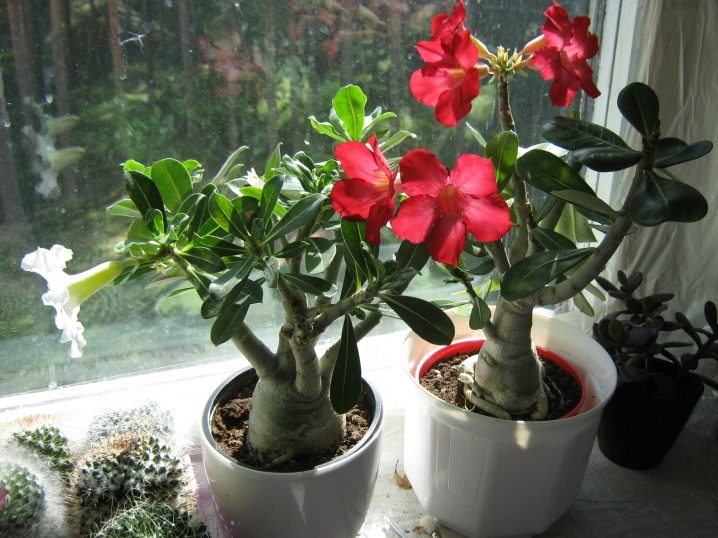
How to care?
Proper care of "Obesum" at home will give you the opportunity to admire the beautiful flowering of "Impala Lily" for a long time. The main thing is to remember that the plant is poisonous, and all work with it must be carried out with protective gloves in order to exclude contact of the juice with the skin. Watering is the basis for flower care. "Desert Rose" easily withstands drought and poor soils, so the under-watering rule applies to the plant. Too moist soil, especially in combination with cold air, causes root rot and death of the flower. "Obesum" is watered when the soil is completely dry, abundantly wetting the earth ball, but not letting the water stagnate in the pot. During the growing season, before flowering, it is recommended to spray the flower with warm water. With a decrease in temperature, the need for water decreases, so in winter the flower is watered no more than 2 times a month.

With the resumption of growth, the flower requires additional nutrients. Top dressing with fertilizers containing potassium, nitrogen and phosphorus every month and a half will provide "Adenium" with everything necessary for growth and lush flowering.
Additional application of microfertilizers in spring and autumn will make the soil nutritious and ensure the health of the flower.
The roots of "Obesum" grow very quickly, so the plant needs regular transplantation. Young seedlings require transplanting up to 3 times per season, seedlings under the age of 3 years are transplanted 2 times a year. For adult plants, dishes and soil are changed every spring, following a series of simple steps.
- Before planting, the soil is disinfected with hot steam.
- A layer of expanded clay, broken brick or large pebbles is placed on the bottom of the pot, the finished substrate is poured on top.
- The plant is removed from the ground, washed and dried the roots, along the way checking them for safety. Remove dead or damaged roots, cut out damaged areas.
- The treated plant is planted in a new flowerpot, sprinkling the caudex with soil for stability.
- If the soil is wet, you don't need to water it right away.
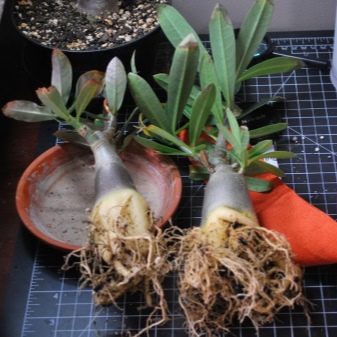
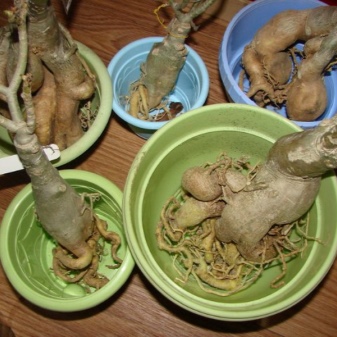
From the age of three months, seedlings begin to form a caudex and a crown. To do this, pinching the growth point, trimming excess branches and growing the shoots in the right places are used. Sprouts for grafting are taken from other plants or from the flower itself, when excess branches are cut. Grafting allows you to get a bush with colorful leaves and flowers.
And you can also create a unique shape by splicing several trunks into one plant.
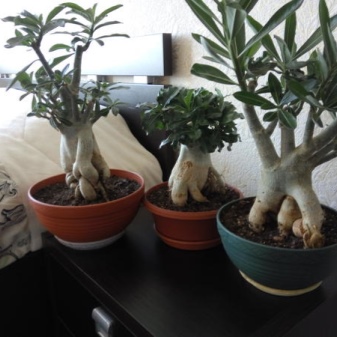

Obesum is formed not only by the crown, but also by the roots.Pinching of the central root is done to a month-old seedling at the first transplant: this will ensure the active growth of lateral roots. If you arrange them in a circle, then in the process of growth the flower will rise above the ground on several thick roots of an interesting shape. Grow "Adenium", forming a central tap or several lateral roots. Root pruning is carried out only on mature plants.
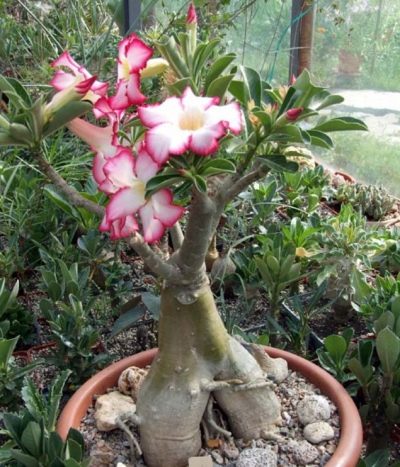
"Adenium" is a native of hot countries, therefore high air temperature and an abundance of sunlight are necessary conditions for the growth and development of a plant. But for good health, "Obesum" should be provided with the opportunity to hibernate when the flower's activity stops. A decrease in temperature in winter will give the succulent an opportunity to gain strength for a new flowering, the main thing is to prevent cooling below + 10 ° C.
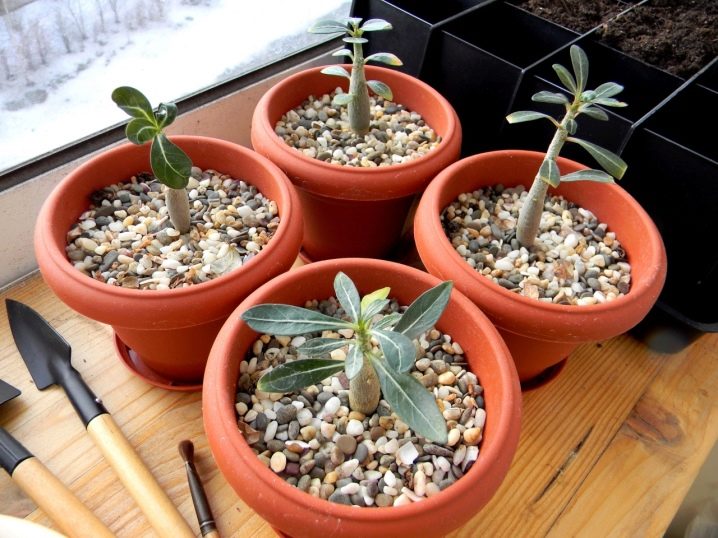
Reproduction
Propagated by the "Star of Sabinia" by sowing seeds and cuttings. You can buy seeds at any specialty store. There are no difficulties in sowing, even a novice grower will have no problems with this:
- soak the seeds in water or in a solution of a biostimulant, or you can do without soaking;
- disinfect the soil before sowing;
- spread the seeds over the surface of the moistened soil and cover the container with foil;
- put the container with seeds in a lighted place.
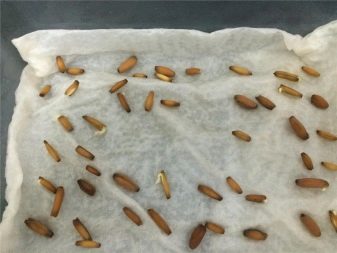
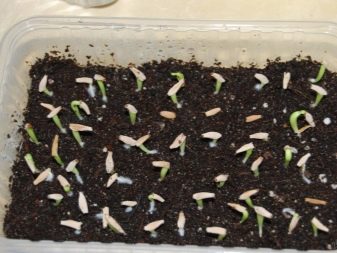
The first shoots will appear in about 5 days. Seedlings need warmth, light and moist air. The greenhouse should be periodically ventilated by opening the film. Sowing is best done in January - February, so that the formation of a succulent can begin by autumn. If it is possible to provide the necessary conditions, then sowing can be done all year round.
For propagation by cuttings, take the branches left after cutting. The cut site is dried for a day, and then placed in a container with a small amount of water so that it slightly covers the bottom of the appendix to a height of no more than 1 cm. Or you can immediately plant the stalk in the ground without watering, and cover with a glass to create a greenhouse effect. It will be possible to water in a week, moistening the soil around the seedling, but not pouring it under the root. Cuttings have one drawback: with this method of propagation, caudex may not form. To avoid the loss of decorativeness, they use the ability of the plant to easily grow together with their own kind in the places where the cuts are made.
By combining several cuttings into one trunk, you can create a unique composition.
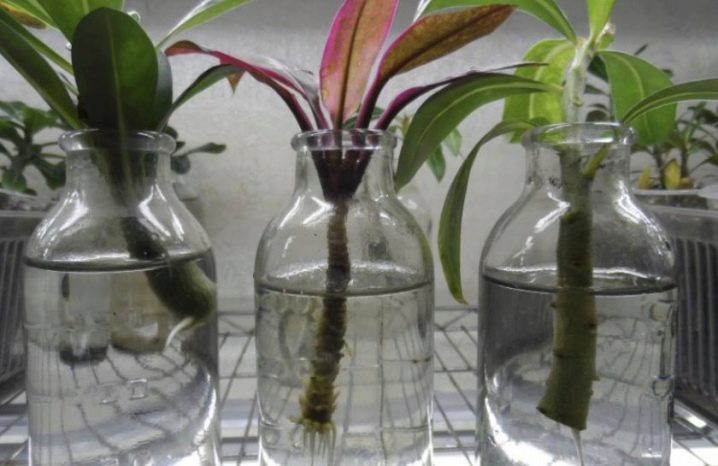
Diseases and pests
Observing the rules of care and maintenance, it is easy to get a healthy unique plant with unusual caudex shapes and beautiful flowers. Despite its toxicity, "Adenium" has not escaped various diseases and pests. The greatest danger to him is root decay. The reason for this is the heavy waterlogged soil, stagnant water in the flowerpot and cold air. To cope with this situation, you must:
- remove the flower from the ground;
- wash and dry the root system, removing damaged parts;
- plant a flower in a new succulent substrate.
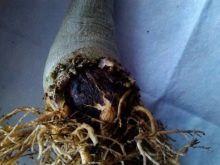
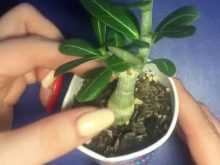
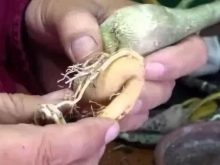
Root mites can grow in light dry soil. In the fight against this pest, soil treatment before planting and spraying with Fitoverm or Aktar, if the plant has already been planted, will help. Small holes on the top of the leaf plate and the lower part of the leaf covered with cobwebs indicate that the "Desert Rose" is affected by a spider mite. It is difficult to deal with this pest in room conditions; poisonous substances are used to combat it.
It is necessary to process the leaves with an insecticide solution "Fitoverm" or "Neoron". And you can also spray the plant with onion infusion for prevention.
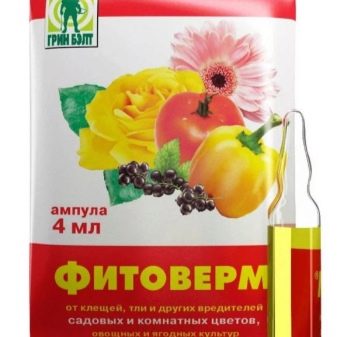

Mealybug leaves behind a white coating and small black dots. The affected plant stops growing, and the shoots become lethargic.Having washed the leaves of the plant with soapy water and sprayed with a solution of alcohol or infusion of cyclamen, you can cope with the pest at the initial stage of the lesion. In an advanced case, the use of pest control products such as "Actellik" will help. Fungal diseases in the "Desert Rose" occur due to mistakes in care:
- too wet soil;
- lack of heat;
- poor drainage.
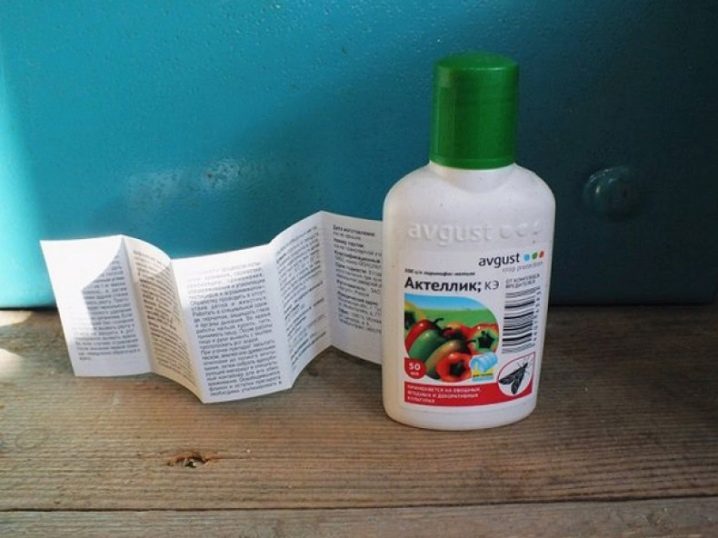
Soft branches, crumbling faded leaves are a sign of fungal diseases. The plant can be saved by transplanting "Impala Lily" into a pot with fresh, fungicide-treated, dry substrate. In the process of transplanting, the damaged parts of the flower are removed, the places of the cuts are dried and sprinkled with charcoal. Watering "Obesum" only after 3 days. The air temperature should not fall below 23 ° C in order to avoid a return of the disease.
For information on how to properly care for obese adenium, see the next video.


















































The comment was sent successfully.